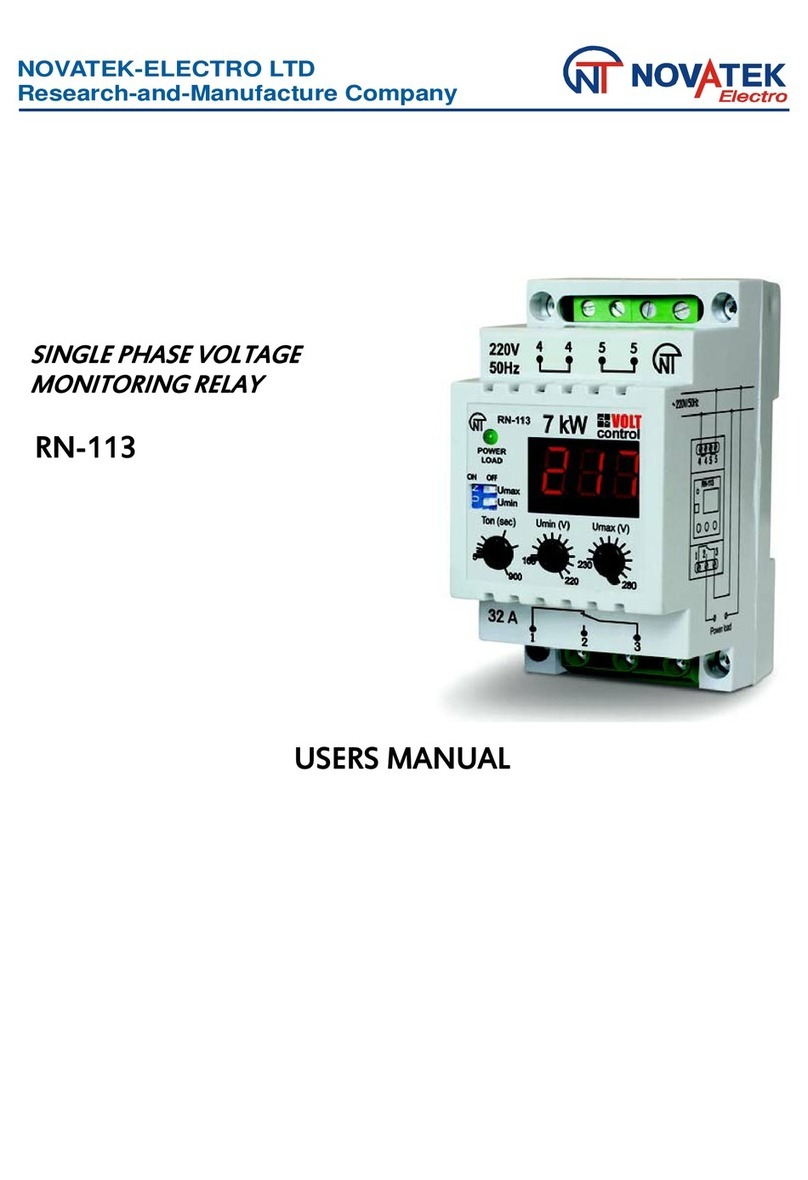
- 5 -
NOVATEK-ELECTRO
TR-101
calculates the current temperature value and outputs it on the digital display and sends Control signals to
the corresponding channel relay.
3.2.2 Input signal processing
The signal that is received from sensor is transformed into a temperature digital value.
In order to eliminate the initial input signal processing error, as well as errors that are produced by the
connection wiring; the device measured value can be adjusted. TR-101 provides for two adjustment types,
which allow performing a gain shift or sloping by a specified degree for each channel independently.
3.2.3 Measurements adjustment
3.2.3.1 To provide for the error compensation ΔR = (R0 - R0.TC) produced by the input wiring resistance
RTC, each measured temperature value (Tизм) is added with a user specified value δ. Figure 3.3 shows
an example of a characteristics shift for Pt100 sensor.
Programmable parameters: , , , .
3.2.3.2 To provide for sensor error compensation upon W100 value deviation from the rated value each
Tизм parameter measured value is multiplied by the user set adjustment parameter α.
The ratio boundaries are set within 0,50 to 2,00 limits.
Figure 3.4 shows an example of the characteristic slant variation for Pt100 sensor.
Programmable parameters: , , , .
Figure 3.3 Figure 3.4
3.2.4 Digital filter
To provide for the input signal properties improvement the device employs digital filters that allow
reducing the random interference effect on the temperature measurement.
Programmable parameters:
- digital filter band , , , ;
- digital filter time constant , , , .
The filters are set for each input independently.
3.2.4.1 The digital filter band allows protecting the measurement route from single interference and is set
in ºС. If the measured value Tизм is different from the previous Tизм–1 by the value larger than
parameter value, the device assigns to it a value equal to (Tизм + ) (Figure 3.5). Thus the characteristic
is smoothed out.
As seen in Figure 3.5, smaller band width of the filter leads to slowing down the device reaction to
temperature change. That is why in case of low interference level or during operation with discontinuous
temperatures it is recommended to increase the parameter value or switch off the filter band action by
setting the (, , ) parameter value to 0.
When working under strong interference, in order to eliminate its impact onto the device operation, it is
necessary to reduce the parameter value.
3.2.4.2 The digital filter eliminates the noise signal components by smoothing it exponentially. The main
characteristic of the exponential filter is τф– the digital filter time constant, ( , , )
interval, within which the temperature reaches the 63,2% from measured value Tизм (Figure 3.6).
Reducing τфwill lead to a faster device reaction onto discontinuous temperature variations, but also will






































